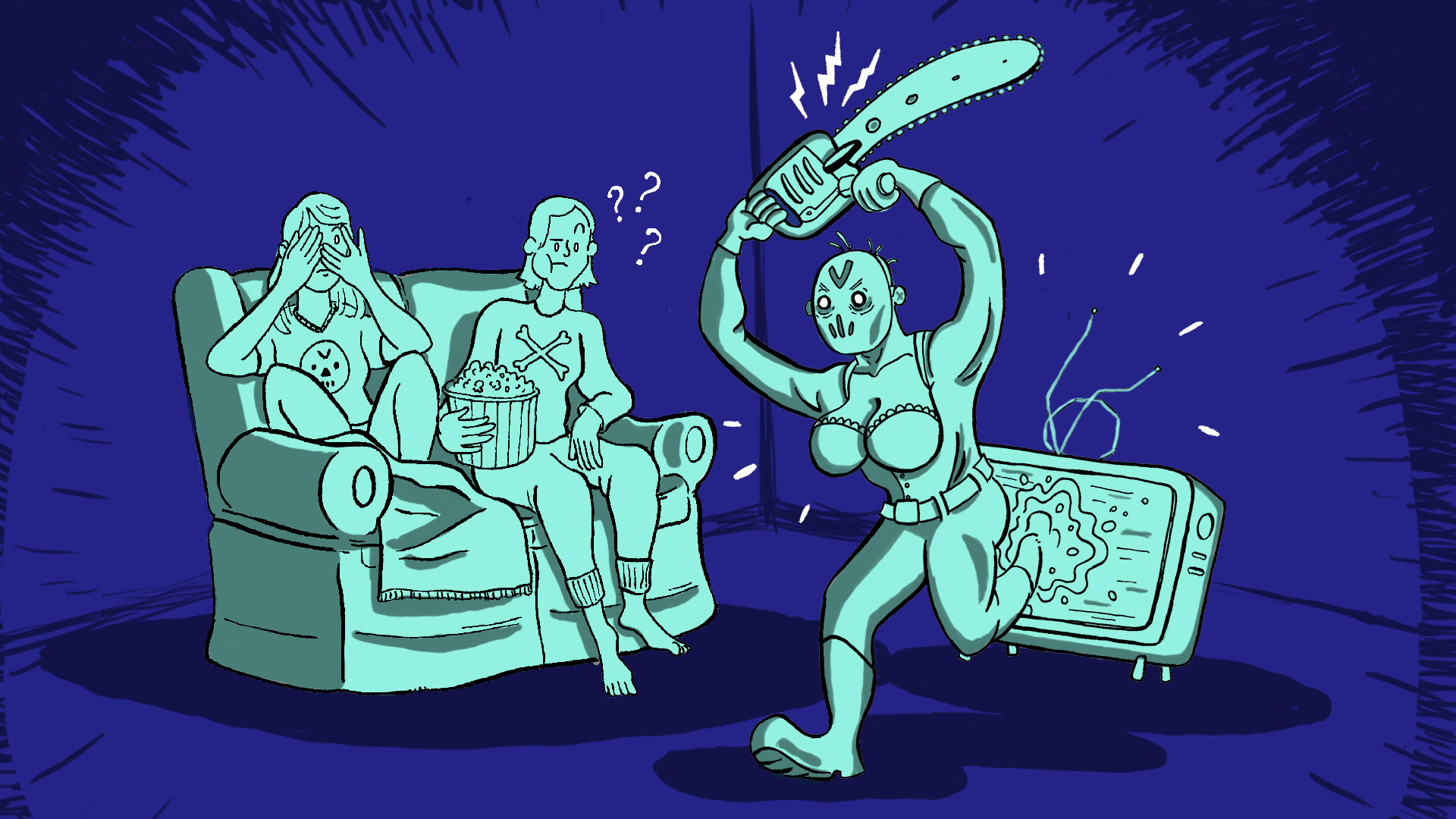
As an adolescent, whenever a sex scene came on the TV, my mother would tell me to cover my eyes. In fact, she still does. I’m 24. I still remember the first time I saw the 2009 remake of Friday the 13th with my family in my Grandma’s living room on Halloween night. The franchise is well known for its over-the-top overuse of female nudity, and when the time came for bombshell Bree (Julianna Guill) to disrobe, I heard the usual: “Close your eyes, Jill.” Up came my sweaty palms and fingers, shielding my retinas from the graphic images just a few feet in front of me.
But much to my mother’s dismay, I only have two hands. My uncovered ears heard the whole thing. I can still hear Trent DeMarco (Travis Van Winkle) saying, “Oh, wow. Your tits are stupendous.” Stupendous — that’s a direct quote. And after the sex scene continued for what felt like a little too long, Jason Voorhees broke into the home and impaled Bree with the antlers from a taxidermied buck mounted to the wall.
Within the horror genre female characters experience violence and brutality at the hands of male antagonists considerably more often than male characters do. They are also far more likely to experience sexual violence (see: the rape-and-revenge subgenre: I Spit On Your Grave (1978), A Gun For Jennifer (1997), The Girl With the Dragon Tattoo (2009), etc.). The horror genre also tends to mix sex with violence, and even murder (see: the Scream franchise “rule” that if a character has sex, they die).
But why are there so many exposed breasts in horror films? Gratuitous female topless nudity is more frequent in horror and slasher films — whose target demographics are often men roughly between the ages of 17 and 30 — than any other genre of film. The nudity almost never services the film’s plot; these scenes simply serve to stimulate the male gaze: a term originally coined by Laura Mulvey in her 1975 essay “Visual Pleasure and Narrative Cinema.” Mulvey describes the male gaze as the depiction of female characters on screen in an overtly sexualized and de-humanizing manner. Though Mulvey never mentioned the horror genre specifically, the male gaze continues to further the degradation of women in horror, with exploitative scenes that almost always end in gory violence against female characters.
There are 732 titles on the International Movie Database (IMDb) under the category “feature film, horror, female-frontal-nudity.” There is not a male-frontal nudity category within in the horror genre on IMDb.
There is, however, a scene in A Nightmare on Elm Street 2: Freddy’s Revenge (1985) that does address this notion of male nudity in horror. Jesse (Mark Patton) is trapped in the locker room by Coach Schneider (Marshall Bell), and the uneasy tension on screen suggests his intent to sexually assault the teen. But although it’s clear that the coach is naked, at no point is there any male full-frontal nudity in the way we see it with women. His body is always shot shadowed or from behind. But the association with nudity and imminent violence still holds true here — as the coach approaches, completely naked, he falls victim to Freddy, slashed twice in the back will Freddy’s claws as blood sprays from the locker room showers.
Pivoting to a more contemporary example, the indie horror comedy Other Halves (2015) was pulled from the Amazon streaming service in 2017 for having seven seconds of full-frontal male nudity in its opening scene. Though the scene itself was non-sexual, the streaming company insisted that the filmmakers edit out the male nudity in order to remain on the platform. It is also noteworthy that while there was also full-frontal female nudity in the same shot, it was not mentioned by Amazon as the problematic content in question.
Perhaps the most recent instance of a horror film containing both male and female frontal nudity is Midsommar (2019). It received a “severe” rating for nudity on IMDb, and incorporates this element into its depiction of ritualistic sex. The newly-released director’s cut includes even longer scenes of full-frontal nudity that were excluded to presumably avoid an NC-17 rating. Films receiving this dreaded rating — meaning no one 17 or under admitted — are usually cut, edited further, and resubmitted in hopes of achieving an R rating, which would allow them to be distributed to more outlets and, in turn, make more revenue. The message here is women’s bodies sell, men’s bodies are obscene.
So, can the horror industry do away with exploiting women’s bodies before brutally murdering them for spectacle? If it were up to me, this busty and boring trend would die a long, horrible, and entirely overdue death.







